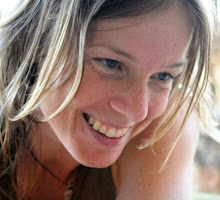Occasionally you meet a horse with a remarkable honesty and willingness to work and learn. Noor is such a horse. She is not pure-bred (Trakhener x Israeli Local Horse), and her conformation is far from perfect. She lacks some muscle mass on a somewhat long back, but with the right work that can be improved. Nevertheless, her attitude is worth more than any paper or perfect looks.
She amazes me in some way every time I work with her. Some horses have a lot of attitude and might have other ideas than what you are asking of them, although they know perfectly well what that is. That might call for some reinforcement to make them understand who is in charge. Noor, on the other hand, wants nothing more than to please, which means that if she gets winded up, or protests in some way, you can be pretty sure that you are doing something wrong, or that she simply does not understand what you are asking of her.
I had some problems with her left lead departure, but that turned out to be just a matter of riding her supple in her left side. Every horse (and human) has a strong and a weak side, but through some proper suppling exercises this can be evened out. It can be compared to learning to write also with the left hand if you are right-handed. Noor simply needed to get stronger in her left side and she is already much better, taking the left lead almost every time, with little support. Except for fixing the lead departures, she has started on the spin and she stops amazingly, only for the knees and a deep seat and without any rein pressure. One day I was told that she actually stops a little too good with the kids. When they wanted her to go down from a lope to a trot, she stopped in her tracks and the kid almost fell over her head! It took me one more session to clear out the difference between those two things. Now, of course, it demands that the kids squeeze her with their legs a bit to keep her in the trot. She will be the best teacher when I am ready with her. ;)
Up until now I have ridden her on a "cowboy snaffle" bit, which is like a jointed snaffle bit, but with shanks and a curb strap, which makes it into a leverage bit. I am not so fond of this kind of bit, but that is what all the horses are carrying and nothing else was available. I have used it with care and asked the horse to give to pressure mentally and not physically.
Noor is very broke in this bit nowadays and gives her head to the lightest pressure both laterally and vertically, so I wanted to give her a new challenge. I use a plain rope halter on her and I tend to keep it under the bridle when I ride, with the lead rope tied like reins. When we have been riding out on the trail I often give her release from the bit reins and only hold the halter reins. Today I decided to ride her with the halter reins in the arena, and with some minimal guidance to show her that the halter means the same as the bit, she was broke for the halter in no time. I was stunned that the transition went so fast. She gave her face and moved shoulders and hips, and she stopped on a dime from the lope, and backed up nicely. Pure joy!

Noor in the bridle with the rope halter underneath, moving in two-track towards the camera (I know that my hand position sucks, but I was not really riding and suddenly it was time for a Kodak moment and I just casually moved her towards the camera ;)

Noor in the rope halter, having a conversation with Pesach, a yearling Friesian/Quarter colt.
What I want now is a bosal, which is a more refined kind of bit-less bridle. The halter is all-right, but still not properly balanced on her face and not really aimed for riding. We don't have any bosal, but maybe I can get one myself in time. You can judge a rider on the level of severity of the tools that he or she uses. The better the connection between horse and rider, the less tools you need. Then in the end you might end up riding like this (Sorry for not being able to fit the whole video in the column):



No comments:
Post a Comment